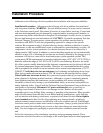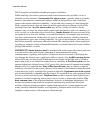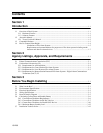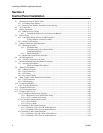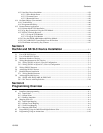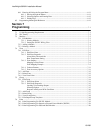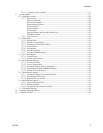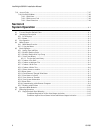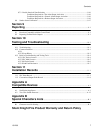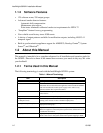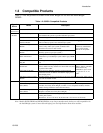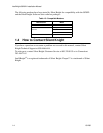Installation Manual
FACP operation and reliability depend upon proper installation.
While installing a fire alarm system may make lower insurance rates possible, it is not a
substitute for fire insurance! An automatic fire alarm system - typically made up of smoke
detectors, heat detectors, manual pull stations, audible warning devices, and a fire alarm
control with remote notification capability - can provide early warning of a developing fire.
Such a system, however, does not assure protection against property damage or loss of life
resulting from a fire. Any fire alarm system may fail for a variety of reasons: Smoke
detectors may not sense fire where smoke cannot reach the detectors such as in chimneys, in
walls, or roofs, or on the other side of closed doors. Smoke detectors also may not sense a fire
on another level or floor of a building. A second floor detector, for example, may not sense a
first floor or basement fire. Furthermore, all types of smoke detectors, including ionization
and photoelectric types, have sensing limitations. No type of smoke detector can sense every
kind of fire caused by carelessness and safety hazards like smoking in bed, violent explosions,
escaping gas, improper storage of flammable materials, overloaded electrical circuits, children
playing with matches, or arson.
IMPORTANT! Smoke detectors must be installed in the same room as the control panel and
in rooms used by the system for the connection of alarm transmission wiring,
communications, signaling, and/or power. If detectors are not so located, a developing fire
may damage the alarm system, crippling its ability to report a fire. Audible warning devices
such as bells may not alert people if these devices are located on the other side of closed or
partly open doors or are located on another floor of a building. A fire alarm system will not
operate without any electrical power. If AC power fails, the system will operate from standby
batteries only for a specified time. Rate-of-Rise heat detectors may be subject to reduced
sensitivity over time. For this reason, the rate-of-rise feature of each detector should be tested
at least once per year by a qualified fire protection specialist. Equipment used in the system
may not be technically compatible with the control. It is essential to use only equipment listed
for service with your control panel. Telephone lines needed to transmit alarm signals from a
premise to a central monitoring station may be out of service or temporarily disabled. The
most common cause of fire alarm malfunctions, however, is inadequate maintenance. All
devices and system wiring should be tested and maintained by professional fire alarm
installers following written procedures supplied with each device. System inspection and
testing should be scheduled monthly or as required by National and/or local fire codes.
Adequate written records of all inspections should be kept.





